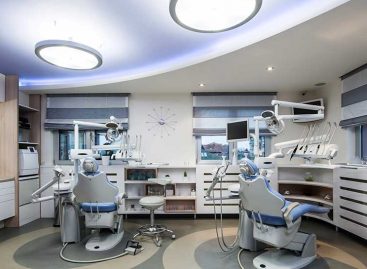The following article was written by Dr. Gho for HairlossTalk to help clear up some of the misconceptions of exactly what Follicular Multiplication is – both for consumers and those in the Hair Transplant Industry…
The Scientific Background of Follicular Multiplication
Since 1996, we have carried out fundamental studies on cell cultures, plucked hair and performed biopsies on material. Recently, the results of one of our fundamental studies have been published in the British Journal of Dermatology (http://www.blackwell-synergy.com). In this publication we have revealed that two distinct parts in hair follicles contain stem cell pools, which can induce hair growth. The first area was found nearby the bulge area, the second area in the outer root sheath of the lower part of the hair follicle. These pools could also have been found on plucked hair and in our cell cultures. (This has been presented at the European Cytoskeleton Meeting).
Longitudinally sectioned hair follicle stained for follicular stem cells in red. Higher magnifications (x40) of areas found to be positive for follicular stem cell markers are shown next to the respective areas of the hair follicle. Two areas were found to be positive for follicular stem cell markers; i.e. the upper third (A) and lower third (B) of the hair follicle.
This was a part of the fundamental basis for Follicular Multiplication as well as for Hair Multiplication.
Follicular Multiplication is a project that was started approximately eight years ago, prior to Hair Multiplication. At that time we didn’t yet have a name for this project, called the Follicular Multiplication project today. The main objective of this study was to determine the minimal quantity of (follicle) tissue needed to regenerate completely normal hair growth. All these studies resulted in the patented GHO method of Follicular Multiplication.
In the Follicular Multiplication study, we revealed four remarkable discoveries:
1. The whole follicle is not needed to regenerate hair growth. The upper part of the follicle can regenerate a completely differentiated hair. This was proven by the partial follicular unit transplantation study. With this study we revealed that it was not necessary to transplant the entire follicular unit to regenerate differentiated hair growth, but only a part of the follicular unit.
2. When a small portion of the follicle remains in the dermis, it can regenerate a completely differentiated hair.
3. Not both stem cell populations are necessary to induce normal hair growth. Therefore we can conclude that two hairs can grow from one follicle. If a small portion of the follicle remains in the donor area, it can regenerate a new hair, even when the major part of the follicle has been removed. The major part, which has been removed, will also produce a hair after being transplanted to the recipient area. So, one hair follicle can produce two hairs. However, at times too much follicle tissue has been removed from the donor area, so only the graft will regenerate a new hair. Furthermore, at times insufficient follicle tissue is removed from the donor area, resulting in only the donor area being able to continue producing hairs. Therefore, the percentage of “multiplication” varies for each patient.
4. The most remarkable and interesting finding is the so-called “Pili Multigemini.” This is a phenomenon where from one follicle, two or more follicles develop. In a normal follicle unit, two to three follicles are present. These follicles will generate two to three normal hairs. In several subjects we noticed that where one or two upper parts of the follicles were implanted, not one or two hairs, but three to even five hairs regenerated. This discovery was the basis of Hair Multiplication. The photos below show the phenomenon of “Pili Multigemini”.
Example of Pili Multigemini Example of Pili Multigemini Example of Pili Multigemini
Follicular Multiplication Today
At the time we did not continue to develop Follicular Multiplication because we could only extract 40 to 50 grafts in one day and instead continued to develop Hair Multiplication. Due to the innovation and development of new instruments as well as of our technique, we are now able to extract 350 up to 500 grafts in one day, depending on the condition of the skin.
Due to our Follicular Multiplication technique being new, 99.9% of doctors are not yet familiar with this technique. They do not know what to expect and may believe that the wound healing is the same as compared to the old technique. In addition, we also get new information every day.
The Difference between Follicular Unit Extraction (FUE) and Follicular Multiplication
The difference between FUE and Follicular multiplication is that we do not extract the whole follicular unit. In our (fundamental as well as clinical) studies we revealed that the whole follicle is not needed to regenerate hair growth. If a small portion of the follicle remains in the donor area, it can regenerate a new hair, even when the major part of the follicle is removed. The major part, which has been removed, will also produce a hair when transplanted into the recipient area. So, one hair follicle can produce two hairs. The rate of multiplication varies between patients, because we sometimes remove too much follicular tissue from the donor area, so only the graft will generate a new hair. At times we remove insufficient follicular tissue from the donor area, so only the donor area will continue to produce hairs. These are the reasons why the percentage of “multiplication” varies for each patient. At the moment we have increased consistency in the multiplication rate (50 to 80%).
How does Dr. Gho’s Follicular Multiplication differ from traditional hair transplants, which use Strip Excision? How does it differ from the newly practiced “Follicular Unit Extraction” technique (FUE)? This second of a two part article covers the main differences, benefits, and challenges…
The Difference in the Progression of Hair Growth Compared to Follicular Unit Extraction and STRIP Surgery.
We would like to explain the difference in the progression of hair growth in comparison to the other techniques:
There are three different ways hair growth may occur after implantation:
The first way is when they continue to grow directly after implantation. This happens to the majority of implanted hairs.
The second way is when the hairs fall out quickly after implantation, after which they grow back. Since we are not implanting the whole hair follicle, the re-growth can sometimes take more than four months.
The last but not least way is that some parts of the hair will remain in the hair follicle and do not fall out. These hairs are visible and are 2 to 3 mm. in length. The hair follicle parts of these hairs have to develop a new hair follicle again and then push out the remaining hair.
The re-growth of these hairs can sometimes take more than six months. When these remaining hairs are (accidentally) pulled out, there is a chance that the small, growing regenerated hairs are also pulled out. Therefore we advise our patients to be careful to avoid pulling out these remaining hairs.
There are rarely cases in which spots are visible due to having a lower hair density than the surrounding areas. The overall density increases after four months of growth.
As you probably already know, a follicular unit consists of two to three hairs. Since we are not implanting the whole hair follicle, you can image that there are sometimes hair-follicles in the transplanted follicular unit which contain insufficient tissue to allow re-growth, although the parts which remain in the donor area will always regenerate. However, the hair parts which remain in the hair follicle will not harm the remaining hair follicles in the follicular unit and eventually they will fall out.
Dr. Jennifer Martinick, MBBS, of Perth, Australia has conducted scientific research to study the long-term growth characteristics of hair follicles with horizontal sectioning. She revealed that these partial hair follicles can even regenerate after more than 12 months and she came to the conclusion that it is necessary to conduct hair count studies for 18 months instead of the traditional six months done in the past. She received the Platinum Follicle Award for this study during the ISHRS meeting in New York in October of 2003.
The Difference in the Direction of Hair Growth Compared to Follicular Unit Extraction and the STRIP surgery.
Since we are not implanting the whole hair follicle, you can imagine that the transplanted hair follicles need more time to grow into the right direction. There are two different ways in which hairs grow in a certain direction after implantation. The first is that they continue to grow directly into the normal direction after implantation. This will happen to the majority of the implanted hairs.
The second way is that a normal dermal papilla has to be formed again, the surrounding structures being responsible for the direction of growth. This will take some time, sometimes more than 6 months. However, this is in fact the way towards the most natural hair direction. However, this can sometimes be different from the direction of the implanted complete hair follicles.
When the grafts are implanted, the direction is the same as the angle of the holes. The dermal papilla is formed and due to the surrounding structures, the angle of the hair follicle can be different than the angle of the holes. Due to the influence of the surrounding tissues, the hairs are now growing into their natural direction.
Since our technique of Follicular Multiplication is new, 99.9% of doctors are not yet familiar with this technique and, in addition, we receive new information every day. Therefore, we advise the patients to contact us directly.
Every patient has different expectations concerning the results of a treatment. During the in take session a medical doctor will give a true perception of what we be expected by the patient. Our strategy is not to promise what cannot be delivered and keep expectations of the client to a realistic level. Although GHO Clinic will do everything possible to try and fulfil these expectations, there, nevertheless, might be a possibility that the final result does not completely match the expectations. In these cases, GHO Clinic will seriously attempt to find an acceptable solution. Although we at GHO Clinic try to satisfy the patient and work meticulously and with care, there will be some patients with complaints. However, because we feel that it is our personal obligation to try and satisfy every patient, we are always open for suggestions, whether these are of a positive or negative nature.
GHO Clinic Aruba
Due to a large number of requests from residents of the United States, who wondered if it was possible to be treated near to, or in, the United States, we searched for a possible solution. The best answer to the problem we found is to collaborate with a clinical facility on the Caribbean island of Aruba. The advantages of having a treatment in Aruba to Americans are:
- The close collaboration with a renowned dermatologist, Dr Nuris Lampe, who became a fully licensed specialist of the GHO Method, working closely together with Dr Coen Gho.
- The same high quality standards in our brand new clinic as in the Maastricht GHO Clinic.
- There is no time difference, so patients do not suffer from jetlag.
- Aruba is very well known as a tropical holiday destination, so there is the possibility of combining treatment and holiday.
- A lot of US airlines (normal as well as charters) have direct flights to Aruba.
- The travel time is very short (2 hours from Miami, 6 hours from Los Angeles) in comparison with flights to Europe, which is especially true for flights from the US Westcoast.
Since last year there is a successful relationship between Maastricht and Aruba. The medical staff of GHO Clinic performed several treatments on Aruba during August and December of 2003. These proved to be very successful. As a result, GHO Clinic Aruba Freezone N.V. has officially opened her doors on April the 26th 2004. Dr. Nuris Lampe, a well-known experienced dermatologist, will head the team on Aruba. Dr. Lampe graduated from the Central University of Venezuela in 1989 and received the Title of Medical Surgeon. She worked as a medical doctor in Aruba and Mexico for several years. In 1998 she graduated in Mexico, in Dermato-Oncology and Dermatological surgery. Since 1998 Dr. Lampe has been working as dermatologist and dermatological surgeon in her own clinic on Aruba. In the past Dr. Lampe has done a lot of conventional hair transplantations. Rebecca de la Oliva is also a medical doctor and an experienced vascular surgeon. So, both are experienced in micro surgery. They can answer your questions in Spanish, Cuban, Papiamento, Dutch and of course in English. For a period of time a medical doctor of the GHO clinic headquarters will be present to supervise both specialists to make sure their performances, with the new method of Follicular Multiplication, are of the same high qualitative standard as in the Netherlands. An experienced technician of GHO Clinic Maastricht will be on Aruba for several months to ensure a smooth operation.
About Article Author
Kevin Rands is the Founder of HairLossTalk.com and President of Online Health Networks, Inc. a Miami based corporation providing consumer health education on the web. He is also the Founder and Principal Writer for DisrupterDaily.com, an online publication on disruption of health and tech sectors.
View More Articles





No Comments Yet!
You can be the one to start a conversation.